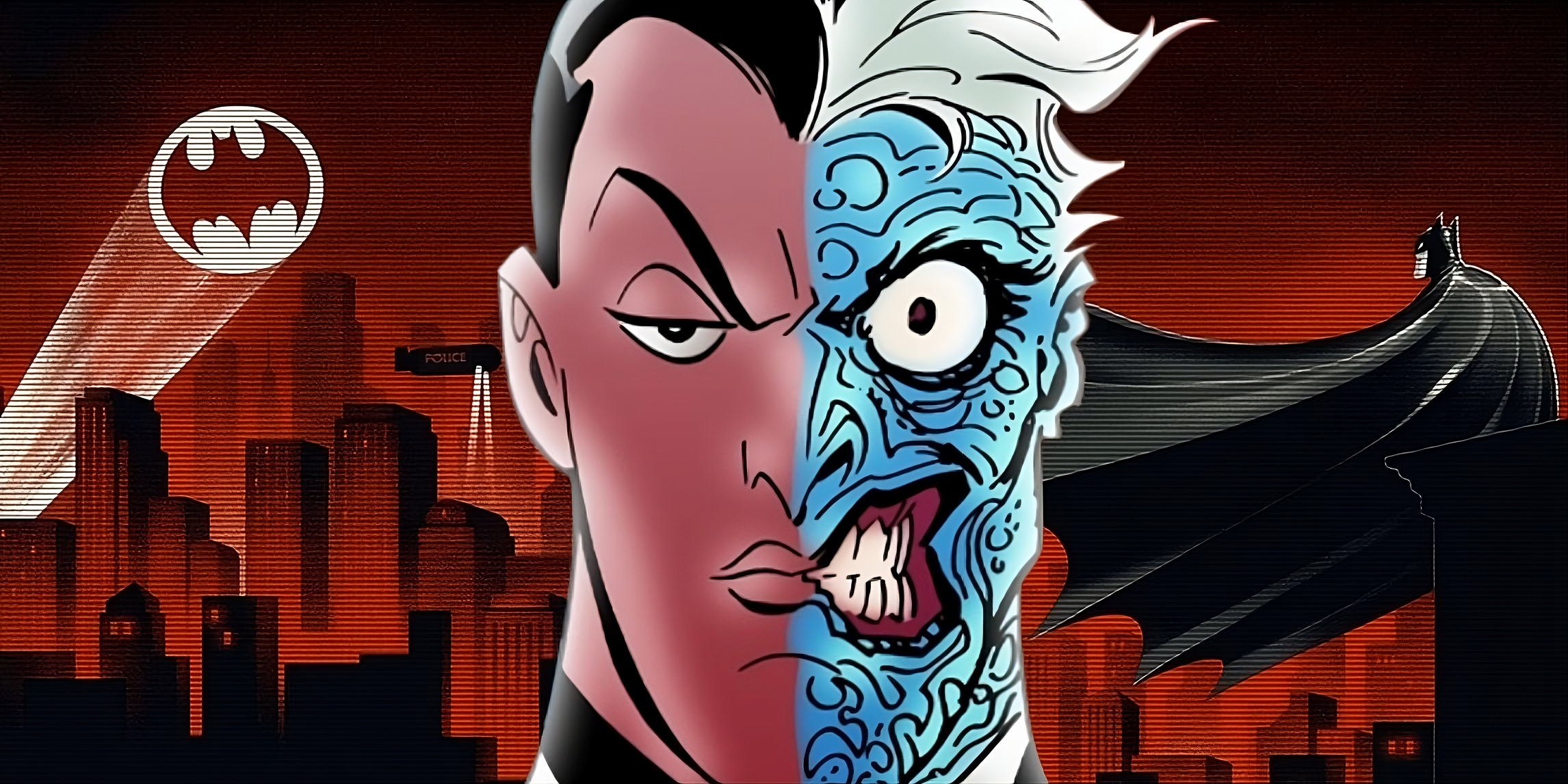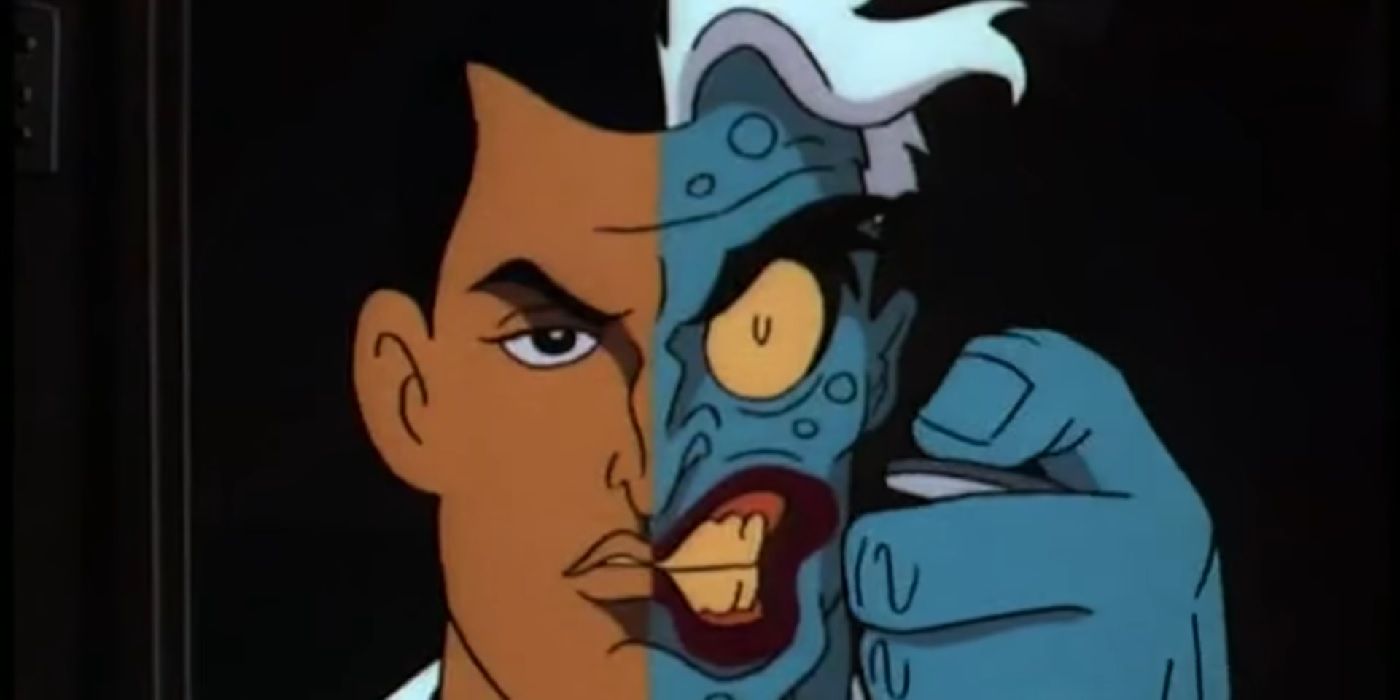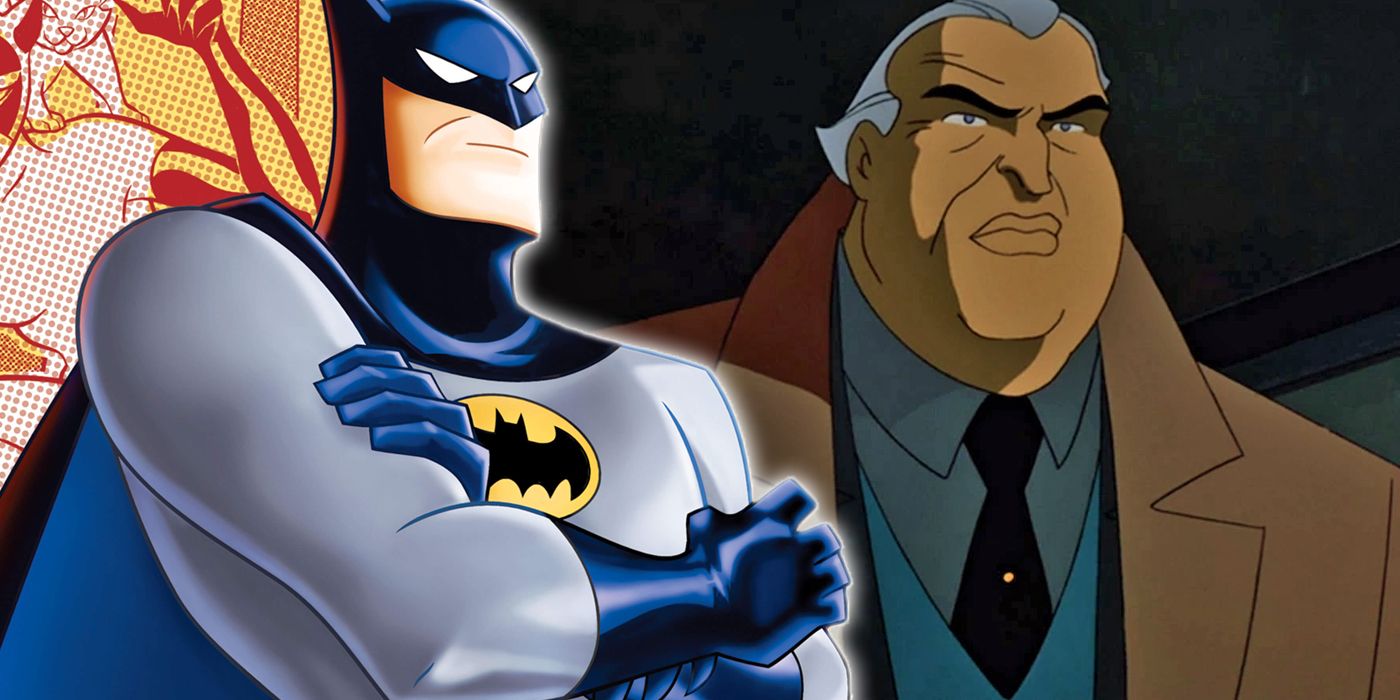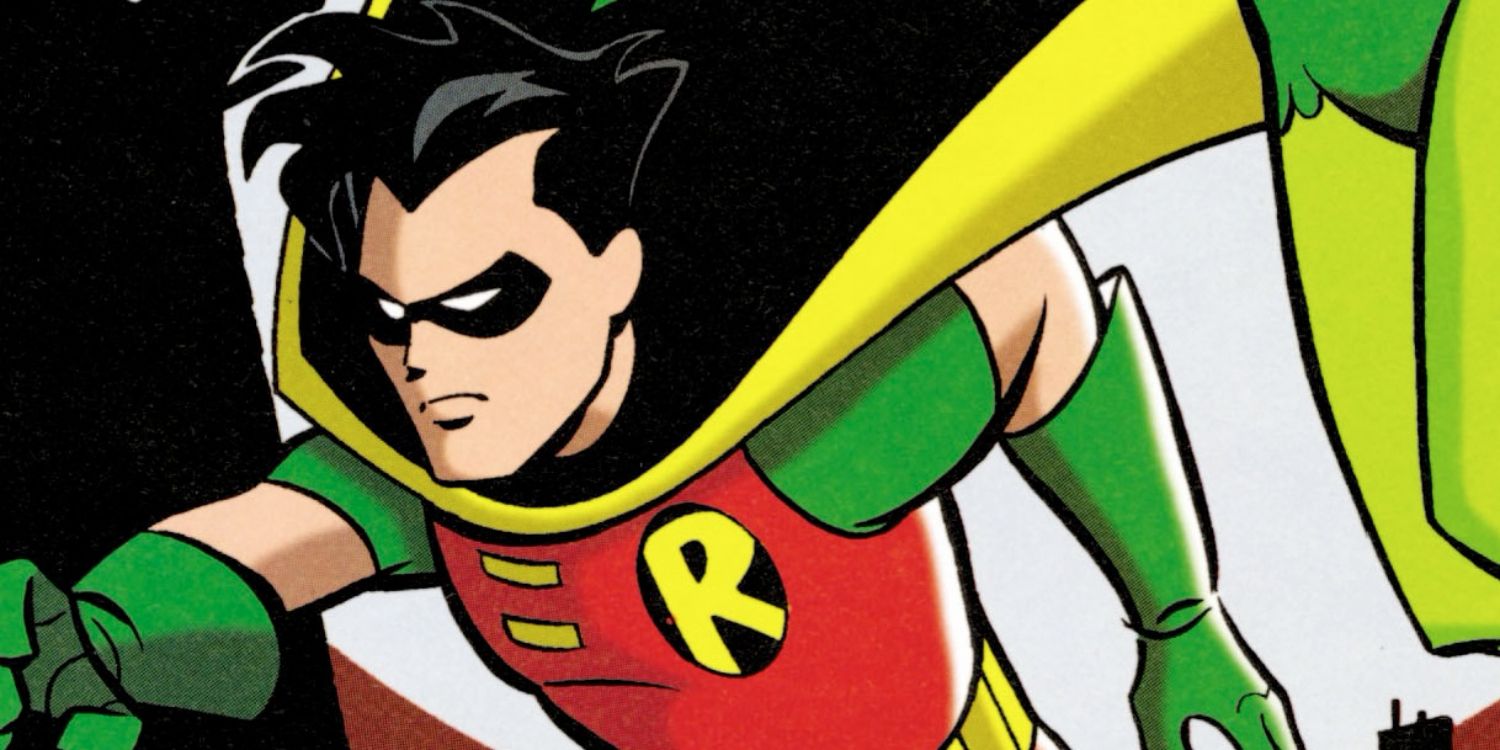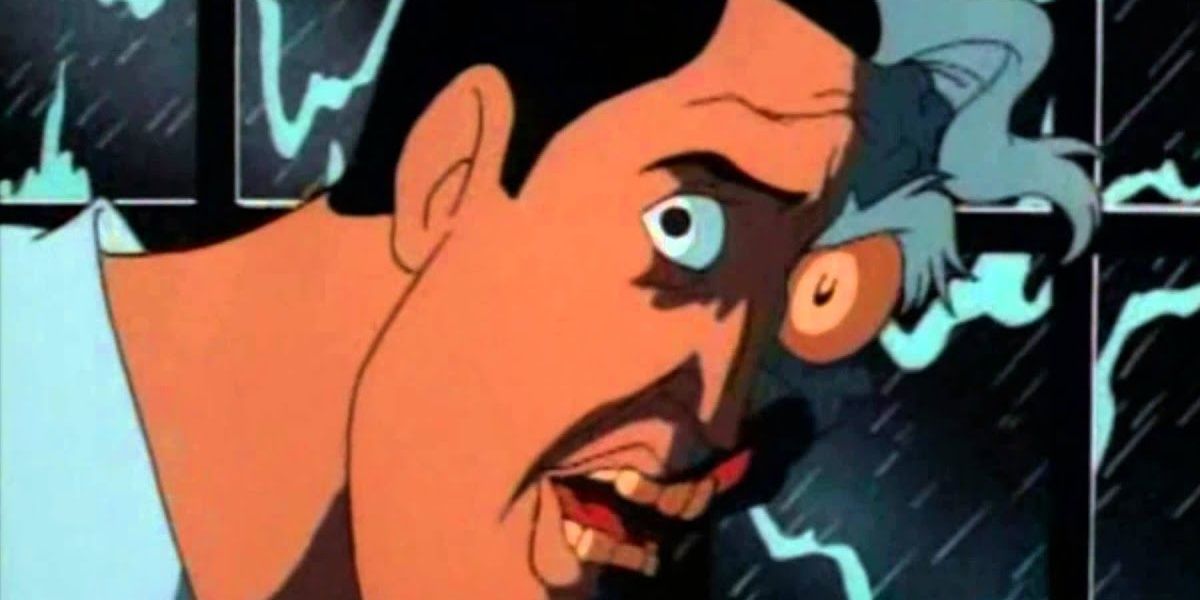Summary
- Two "animated" storylines explore the possibility of Two-Face's redemption through plastic surgery and rehabilitation.
- Batman's emotional investment in Harvey's transformation causes tension with Robin, highlighting their brotherly dynamic.
- A little known comics story from a Batman: The Animated Series co-creator presents another tragedy for Two-Face.
Welcome to the 172nd edition of Adventure(s) Time, where we examine beloved animated series and their comic cousins. This week, Batman: The Animated Series and a comic story from the show's co-creator both address an obvious issue relating to a classic figure in the Caped Crusader's rogues gallery. And if you have any suggestions for the future, let me hear them. Just contact me on Twitter. (And this header image is a combination of the work of Watchtower Database and Mondo. Check them out.)
A Nip, A Tuck, and Reformation?
With a title like "Second Chance," is there any doubt which villain will headline this episode? Debuting on September 17, 1994 as a part of the show's revamp as The Adventures of Batman & Robin, the episode features an impressive roster of creators. Paul Dini and Michael Reaves provide the plot while TV and comics renaissance man Gerry Conway supplies the teleplay. Boyd Kirkland, one of the show's finest directors, helms the episode -- one of his favorites, according to interviews.
An issue with the character of Two-Face that likely must be addressed in modern times is the question of plastic surgery. If the scarring of half of his face (half of his body, in this continuity) is what triggered prosecutor Harvey Dent's descent into villainy, is it conceivable that plastic surgery could play a role in his rehabilitation? "Second Chance" starts with this premise, as the episode opens with Batman and Robin spying from the rooftops as an ambulance escorts Two-Face to the hospital. We learn that Bruce Wayne is footing the bill for Harvey Dent's extensive plastic surgery. His therapy's been going well in recent weeks, and the doctors believe that removing the scars might permanently erase the Two-Face persona.
Batman: The Animated Series established in its early episodes a genuine friendship between Bruce and Harvey, a clever use of the characters that added some tension to the first season, as fans anticipated Harvey's inevitable transformation into Two-Face. Aside from winking at the diehard fans, the move also granted Bruce someone who could work logically as a friend -- a member of Gotham's high society who also shared Bruce's determination to combat crime. Maybe Bruce Wayne is a dark, tortured figure who prefers the company of bats to people…but it's conceivable that he could bond with this guy.
Although the syndicated Batman newspaper strip's continuity was the first to establish a bond between Bruce and Harvey a few years earlier, the friendship established on Batman: The Animated Series is what influenced material like The Long Halloween, and Christopher Nolan's The Dark Knight. (Whether or not the BTAS producers were aware of the newspaper strip's storyline remains unknown.) The idea's lingered because it's a solid one. It unobtrusively inserts another tragedy into Bruce Wayne's history, and adds nuance to Batman's relationship with Two-Face. He isn't merely another villain from the rogues gallery to toss into Arkham, he's a figure from Bruce's past that he truly wants to see redeemed.
The Menace of Pigeons and Lighting Fixtures
Before the operation begins, armed hoods burst in and open fire. Harvey is kidnapped, with one thug issuing the ominous warning that their boss wants to "teach him some respect." Batman and Robin attempt to stop the abduction, but the episode's only a few minutes old, so naturally things aren't going to go their way. The hospital's skylight is too strong to break under the pressure of Batman's grappling-gun, and after the heroes have to endure the indignity of a less-than-dramatic entrance through the door, the thugs manage to take them out with a large overhead lighting fixture.
The clues left behind point to either mobster Rupert Thorne or the Penguin, who blames Two-Face for his recent incarceration. Robin pursues the Thorne angle, while Batman visits Penguin at Stonegate Penitentiary. Robin's confrontation with Thorne ends with him tied up and tossed into the Gotham River, a cliffhanger that serves as an act break and commercial break, dramatized without any musical accompaniment.
Dropping the score might come across as a curious decision from the producers, but it heightens the scene's tension, making the moment feel stark and hopeless as opposed to bombastic, and highlights one element that always made the show special. Batman's score is of course amazing -- original, cinema-quality compositions tailored for each episode, performed by a full orchestra -- but music isn't constantly blaring at the audience; it's used judiciously, and there are moments when the producers realize that less is more. Batman might be the only animated program of the era that would sometimes go into commercial without a musical cue, just one of the many touches that made the show unique.
Batman's investigation, meanwhile, brings him to the Penguin's cell at Stonegate, which the erudite and lonely villain has transformed into a pigeon sanctuary. (Credit to the producers for remembering that the Penguin doesn't suffer from any psychiatric disorders, so he isn't an Arkham Asylum inmate.) Rather than going through any official channels, Batman interrogates Penguin while perched outside the cell's barred window. It looks cool, and it's not as if Batman has to worry about falling, right?
After initially cooperating with Batman, Penguin seizes an opportunity to be rid of the hero when he orders his pigeons to attack. This isn't Batman's finest moment, nearly succumbing to his most physically unimposing opponent and losing to a cadre of trained birds. Luckily, he saves face by pulling a disappearing trick midair as the Penguin calls for security. (What exactly he thinks the guards are going to do to Batman isn't clear.)
Who is Batman's TRUE Friend?
Investigating two promising angles is a standard beat for leads to follow in a mystery story, but this is a sharp script that manages to have each scene fulfill more than one purpose. Throughout the episode, Robin's frustrations with Batman grow, rankling under what he feels is condescending treatment from the Dark Knight. Is he honestly Batman's friend and equal, or is he perpetually the kid sidekick that requires hand-holding?
Batman's attitude towards Robin is rationalized within the story by his history with Two-Face. This is a personal case for Batman, and his instinct is to marginalize Robin and complete the mission on his own. This evokes memories of Robin's origin episode "Robin's Reckoning," which had Batman sidelining Robin on a case he felt would be too personal for his partner to handle. In that story, Robin's rebelliousness is rooted in immaturity (a justifiable response to his parents' killer finally coming to light), but in "Second Chance," Robin's decision to disobey Batman's orders is clearly the right call. It's Batman who's too emotionally involved, making the foolish decision to push Robin away before entering a dangerous confrontation with Two-Face.
As the episode builds to its climax, Batman confirms that it was in fact Two-Face, the man who hates Harvey Dent more than anyone, who ordered the kidnapping. Paying off a line from the opening scene, Batman tracks Two-Face to the Half Moon Club, an old haunt of Bruce and Harvey's, now scheduled for demolition. Two-Face's hired flunkies ambush Batman, attach him to one of the nearby explosives, and dangle him from a scaffolding over Gotham traffic. When Two-Face attempts to use his coin to decide Batman's fate, it defies all laws of physics and probability, landing on edge repeatedly. When it rolls away, Two-Face nearly falls off the building, trying to retrieve it.
Naturally, this was a gimmick coin Batman slipped him earlier. Batman frees himself while Two-Face melts down over the coin, and attempts to appeal to what humanity might still remain within Harvey. "Life or death?" asks Batman as he offers a hand to save his friend. "The coin or me?" Two-Face's choice (made as both Harvey and Two-Face appear to wrestle within) is to drop the coin and sucker punch Batman. Robin, meanwhile, has appeared against Batman's wishes, providing the helping hand needed to save the day. Whereas the previous Two-Face story ended with Bruce's optimistic hope that Harvey will defeat Two-Face one day, this episode closes with Bruce embracing Dick Grayson, reaffirming his position as Bruce's true friend.
Double the Pleasure, Double the Fun
So, while "Second Chance" teases the possibility of Harvey erasing Two-Face via plastic surgery, a related story from the comics actually pays off the concept. "Two of a Kind" debuted in June 1996's Batman Black and White #1, an anthology series that featured tales from esteemed creators, presented in stark black and white. Batman: The Animated Series co-creator Bruce Timm made one of his rare appearances in comics, writing and illustrating the story of Two-Face going under the knife and the madness that follows.
In the span of a mere eight pages, Timm dramatizes a tragic romance for Two-Face, one that begins with pioneering plastic surgeon Marilyn Crane, who not only erases Harvey Dent's scarring but also falls in love with her patient. They prepare for marriage, but Marilyn's twin sister, a hellion named Madeline, emerges from the past to tempt Harvey. She successfully seduces Harvey for a time, but he eventually breaks off the affair. Madeline doesn't take it well, declaring "I'll see her in Hell first!"
Timm sticks to a steady rhythm of eight panels per page, the panels shaped like movie theater screens, separated only by narrow gutters. (And barely two of these panels include Batman.) Timm's skilled enough to render only what needs to be seen in each panel, positioning the "camera" in the precise location each time, never skimping on the details or overloading a panel with too much information. Timm has stated in interviews that he draws on regular-sized paper instead of larger Bristol boards that are reduced later, making this an even more impressive feat. Eight panels per eight pages comes out to sixty-four panels…that's sixty-four consistent right calls, which is remarkable.
This consistent rhythm serves two purposes. In the opening pages, the love triangle between Harvey, Madeline, and Marilyn is established efficiently, giving the readers enough backstory to buy into the premise. In the closing pages, the steady panel layouts build the tension as Harvey discovers Marilyn's fate…and delivers his own brand of justice to Madeline. "Harvey Dent was no killer…but I knew someone who was," he muses before using a fireplace's burning embers to re-scar his skin and revive Two-Face.
The Black and White series featured several standout stories, but "Second Chance" was one of the few selected for the motion comic treatment during the industry's push for the format. It's archived now on YouTube.
Is There Any Redemption for Harvey?
Both stories work under the premise that Two-Face won't be cured…if he goes through with the surgery or not. This is likely more a consequence of an unflexing status quo than a cynical view on reformation, but Two-Face's reversion to villainy leaves both stories as tragedies, regardless.
"Second Chance" is a story that, at the time, could only exist in the BTAS continuity, drawing on the established history between Bruce and Harvey. Older viewers likely deduced quickly that Harvey's abductor was none other than Harvey's darker half, but it's a solid hook for the story, and the investigation scenes are consistently entertaining. At no point do you feel as if you're watching filler.
Using Robin as a counterpoint to Harvey is also clever. Batman's dedication to his fallen friend irks Robin, but the tension isn't overplayed and never feels like melodrama. Both characters remain heroes throughout the story, with only tiny barbs thrown instead of punches.
Clearly, one element "Second Chance" has in its favor is the animation. Boyd Kirkland teaming with Dong Yang Animation, not surprisingly, produces one of the show's finest looking episodes. "Second Chance" appeared toward the end of Batman's run, and any production issues that might've marred earlier shows have been thoroughly annihilated during this final batch of episodes. The first act's motorcycle chase scene, the coordinated pigeon attack, the climax's fast-moving action sequences, and Kirkland's elaborate lighting techniques that pop against the night setting all contribute to something memorable.
"Two of a Kind" could, potentially, be a minefield. Arguably, the premise relies on too great a coincidence -- the doctor who saved Harvey from himself just happens to have an evil twin sister that she's been keeping a secret for weeks. The story's subject matter is also an early demonstration of what some fans have now deemed Timm's "edgelord" tendencies. Seeing the animated style utilized in more adult material is perhaps unnerving, and while his previous work Mad Love might've featured a few moments too hot for Saturday morning censors, it isn't nearly as disturbing as "Two of a Kind." PG-13 language, smoking, adultery, domestic abuse, sex, all in the same style utilized on the era's kid-friendly Batman merchandise…we've come a long way from "I've Got Batman in my Basement."
All that said, the execution is truly admirable. The coincidence that sets the plot in motion feels more poetic than contrived, largely because Timm so efficiently establishes Harvey's state of mind and sells the romance. The salaciousness might read far more like Sin City than anything in the Adventures comics, but it's essential to the narrative. This isn't the story of a hero outwitting some villain's evil scheme, it's a story of duality and deception, the core concepts behind its lead character. The pulp narratives that inspired this story didn't grant audiences clean, happy endings, either, and if the world of BTAS is to stay true to the era that so clearly inspires it, there can be room for stories like these, also.
Both of these stories mark the final attempts of this canon to humanize Two-Face. The narrative of Bruce holding on to the hope of Harvey's reformation is abandoned during the show's next evolution as The New Batman Adventures. Two-Face plays a pivotal role in the new Robin's origin, but he's no more sympathetic than the Joker by this point. The final Two-Face story from these creators was 1998's "Judgment Day" episode, which introduced a third personality for Harvey -- the Judge, who deemed Two-Face as deserving of death as any other Gotham City rogue. A harsh sentence, but plenty of evidence indicates it's a fair one.

